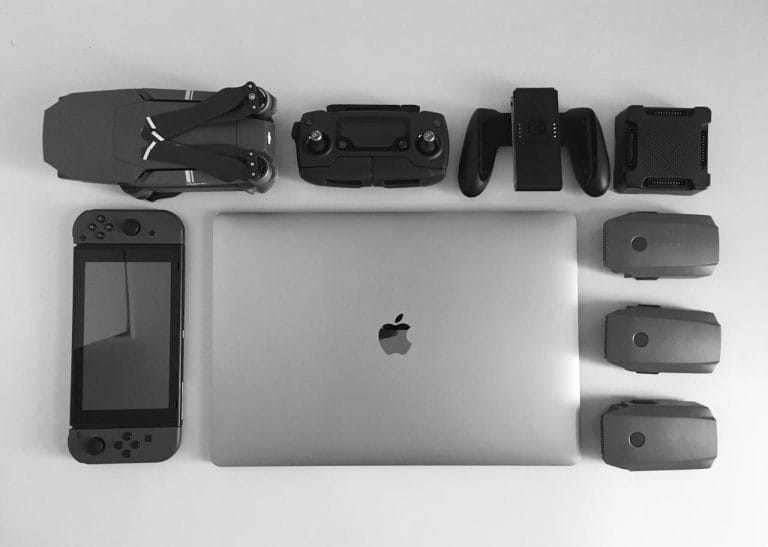
If your gadget blog is targeting keywords like “best smartphone” or “top headphones,” you’re probably buried somewhere on page 47 of Google.
The truth? Those high-volume keywords are dominated by mega-sites with million-dollar SEO teams. But here’s the good news: there’s a smarter (and much more profitable) way to win traffic and make affiliate sales.
It starts with finding low-competition, buyer-intent keywords — the ones nobody’s fighting over but people are actually searching for.
Let’s break down exactly how to find those hidden keyword gems and use them to drive real traffic (and affiliate sales) to your gadget blog.
Table of Contents
Step 1: Focus on Buyer Intent, Not Just Search Volume
High traffic is great — but only if it converts. When someone types in “USB-C hub with 4K HDMI for MacBook Air,” they’re not researching. They’re shopping.
That’s buyer intent.
Instead of going for broad gadget terms like “Bluetooth speaker,” go for ultra-specific ones like:
- “best mini Bluetooth speaker for shower”
- “loudest waterproof speaker under $50”
- “JBL vs Anker speaker for bass”
Pro tip: These longer phrases are easier to rank for and bring in readers who are ready to click “buy.”
Step 2: Use These Free (or Cheap) Keyword Tools
Here’s what I use to dig up low-competition SEO gold:
- Google Autocomplete: Start typing a keyword and see what Google suggests. These are real searches.
- Ubersuggest: Great for keyword ideas and basic competition data.
- Keywords Everywhere: Browser extension that shows keyword volume + CPC as you search.
- AnswerThePublic: Find actual questions people ask about gadgets.
- Amazon itself: Check product Q&As and review sections for phrases and problems people mention.
You don’t need to overcomplicate this. Sometimes the best keyword comes from reading the one-star reviews on a product.
Step 3: Create Smart Blog Content Around These Keywords
Once you have your keyword, build a blog post around it using this simple structure:
Title Example:
“Best Budget Wireless Earbuds for Zoom Calls (That Don’t Sound Like Trash)”
Post Structure:
- Intro – Hook the reader with the pain point
- Mini reviews – Add affiliate links + pros/cons
- Real-life use case – Describe why it matters (e.g., “I tested these during 4 hours of Zoom and here’s what happened”)
- FAQs – Answer extra questions people search for
- CTA – “Check current price on Amazon” or “See full product page here”
SEO tip: Use the keyword in your title, first 100 words, one subheading, and the meta description.
Step 4: Use This Simple Formula to Find Endless Topics
Try this fill-in-the-blank format:
- Best [gadget type] for [specific person or situation]
→ e.g., Best noise-canceling headphones for airplane travel - [Product A] vs [Product B] – Which Is Better in 2025?
→ e.g., Tile vs Apple AirTag for Android Users - Top 5 [type of gadget] Under $[price]
→ e.g., Top 5 smart home gadgets under $30
Each of these topics has strong affiliate potential because they catch people who are this close to buying.
Step 5: Optimize Your Posts for Real People (Not Just Google)
Yes, you want to rank. But you also want your content to feel human. Here’s how:
- Use short paragraphs (2–3 lines max)
- Break up text with images, tables, or bullet points
- Add real voice – your personal thoughts, testing results, or even a bit of humor
- Link smartly – internal links to related posts and clear affiliate buttons
The goal? Keep people scrolling, clicking, and buying.
Bonus Tip: Use Pinterest for Extra SEO Juice
Pinterest isn’t just for recipes and wedding inspo — it’s a goldmine for gadget bloggers. And guess what? It works like a visual search engine.
Pin your blog posts using clear, keyword-rich titles and high-quality images. For example:
- 📌 “Top 10 Gadgets for Tech-Savvy Travelers”
- 📌 “This Mini Projector Turned My Room into a Movie Theater”
You’ll get extra traffic and backlinks without relying only on Google.
Final Thoughts: SEO Doesn’t Have to Be a Nightmare
You don’t need to master every algorithm or spend hours buried in keyword spreadsheets.
If you can:
- Find what people actually search for,
- Write like a human,
- And recommend smart gadgets they’ll love…
…you’ll build traffic. And traffic leads to clicks. And clicks lead to sales.
Start small. Pick one keyword. Write one solid post. Do it again. You’ve got this.




